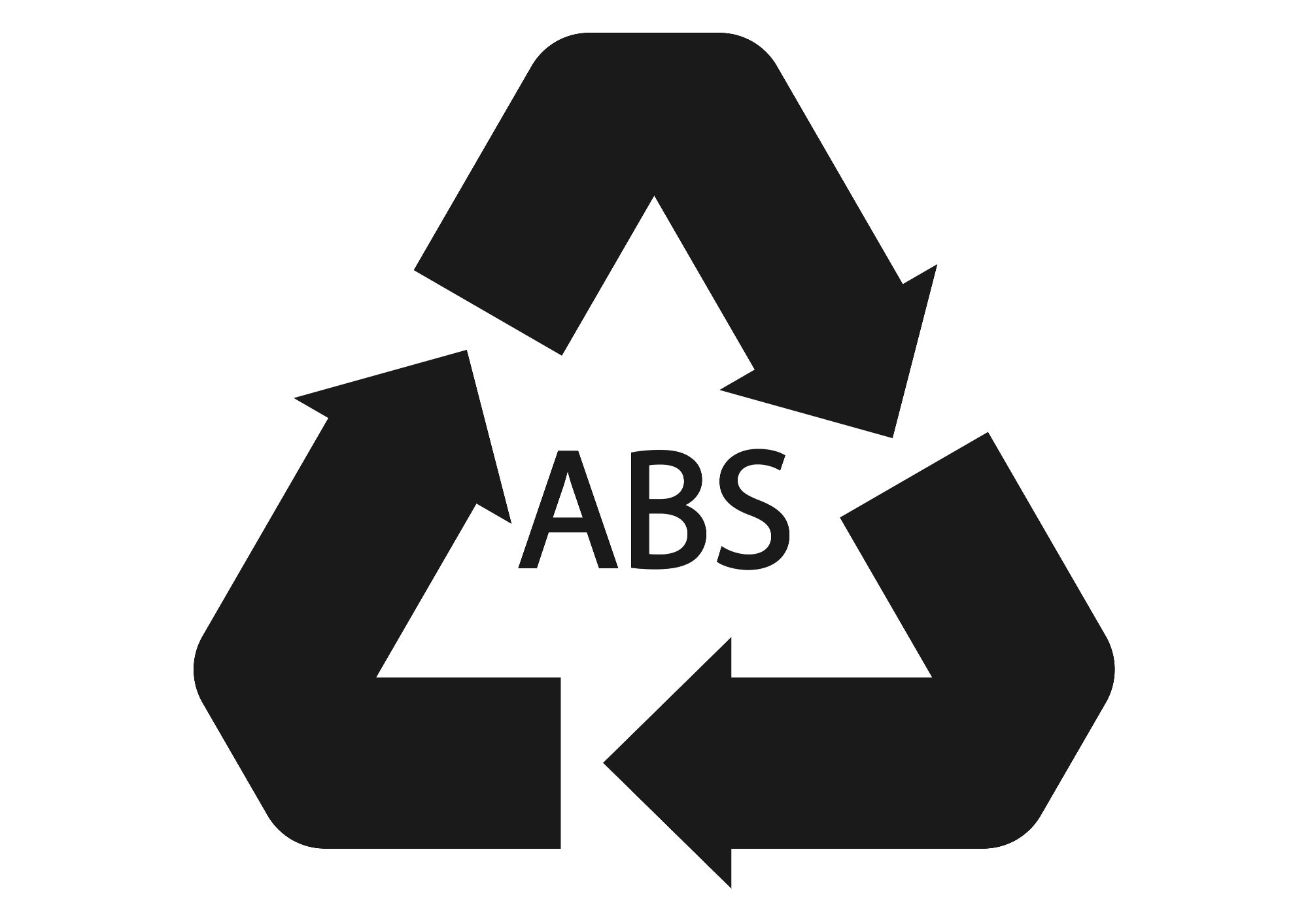|
Updated by Reginald Davey 23/09/22
Acrylonitrile butadiene styrene is a thermoplastic polymer composed of the monomers acrylonitrile, butadiene, and styrene. This terpolymer is stronger than pure polystyrene and is prepared by polymerizing acrylonitrile and styrene in the presence of polybutadiene.

Image Credit: Ruslan Maiborodin/Shutterstock.com
Proportions of the monomers in ABS can vary, with 40-60% styrene, 15-35% acrylonitrile, and 5-30% butadiene. Acrylonitrile has several beneficial effects on the polymer, such as fatigue resistance, chemical resistance, rigidity, hardness, and higher heat deflection temperatures.
Styrene gives the polymer beneficial properties such as easier processability and an impervious, shiny surface. Polybutadiene, which is a rubber-like substance, improves ductility and toughness at lower temperatures. Different grades of ABS material can be prepared by changing the proportions of its monomers. The properties of ABS plastic materials are affected by the processing route.
Proportions of the monomers in ABS can vary, with 40-60% styrene, 15-35% acrylonitrile, and 5-30% butadiene. Acrylonitrile has several beneficial effects on the polymer, such as fatigue resistance, chemical resistance, rigidity, hardness, and higher heat deflection temperatures.
Styrene gives the polymer beneficial properties such as easier processability and an impervious, shiny surface. Polybutadiene, which is a rubber-like substance, improves ductility and toughness at lower temperatures. Different grades of ABS material can be prepared by changing the proportions of its monomers. The properties of ABS plastic materials are affected by the processing route.
Polymer Type
|
|
Thermoplastic
|
Advantages
|
|
Higher heat distortion temperature than conventional grades of ABS by approx. 15°C ( 25°F ) at 0.45Mpa ( 66psi ).
|
Disadvantages
|
|
ABS plastics require higher mold surface temperatures and higher temperature profiles in processing than typical grades of ABS. Hence molding cycle times are likely to be longer.
|
Properties of ABS
|
|
As mentioned earlier in this article, the final properties of acrylonitrile butadiene styrene are influenced by the processing route utilized during manufacture. High-temperature molding improves its heat and gloss resistance, but lower-temperature molding produces ABS materials with the highest strength and impact resistance.
Acrylonitrile butadiene styrene is resistant to several types of aqueous acids and alkalis including concentrated phosphoric and hydrochloric acid. They are also resistant to mineral, vegetable, and animal oils. However, they can be attacked by concentrated sulfuric and nitric acid, and aromatic hydrocarbons, carbon tetrachloride, and glacial acetic acid can cause swelling in the material.
Upon exposure to high temperatures, acrylonitrile butadiene styrene is highly flammable but, as the material is halogen-free, fumes contain a lack of persistent organic pollutants. Sunlight can also degrade products made out of ABS materials.
|
|
|
|
Density (g/cm3)
|
1.06
|
|
Surface Hardness
|
RR111
|
|
Tensile Strength (MPa)
|
47
|
|
Flexural Modulus (GPa)
|
2.7
|
|
Notched Izod (kJ/m)
|
0.13
|
|
Linear Expansion (/°C x 10-5)
|
7
|
|
Elongation at Break (%)
|
7
|
|
Strain at Yield (%)
|
3.2
|
|
Max. Operating Temp. (°C)
|
70
|
|
Water Absorption (%)
|
0.3
|
|
Oxygen Index (%)
|
19
|
|
Flammability UL94
|
HB
|
|
Volume Resistivity (log ohm.cm)
|
16
|
|
Dielectric Strength (MV/m)
|
15
|
|
Dissipation Factor 1kHz
|
0.008
|
|
Dielectric Constant 1kHz
|
2.7
|
|
HDT @ 0.45 MPa (°C)
|
112
|
|
HDT @ 1.80 MPa (°C)
|
104
|
|
Material. Drying hrs @ (°C)
|
2 @ 90
|
|
Melting Temp. Range (°C)
|
250 - 285
|
|
Mould Shrinkage (%)
|
0.5
|
|
Mould Temp. Range (°C)
|
40 - 80
|
|
Applications
|
|
ABS is used in multiple common commercial products such as automotive bumper bars, trim components, golf heads, binoculars, inhalers, musical instruments, and LEGO. The material is also employed in medical applications such as prostheses, non-absorbable sutures, and tracheal tubes. It is also used in some tattoo inks as a finely-ground ingredient.
The field of 3D printing has also made extensive use of ABS as it is highly stable, strong, cheap, and can be post-processed using various methods such as chemical smoothing and sanding.
Hazards
At high temperatures, ABS can decompose into its constituent monomers, which have varying levels of known carcinogenicity. Hydrogen cyanide and carbon monoxide can also be produced if ABS is burned. At lower temperatures in processes such as 3D printing ultrafine particles can be produced, which have been linked with adverse health conditions such as lung, organ, and tissue damage.
More from AZoM: Acrylonitrile Butadiene Styrene - Polyvinylchloride Alloy - ABS/PVC Alloy
|
|
Source : Abstracted from Plascams
For more information on Plascams please visit RAPRA Technology Ltd.
|
Disclaimer: The views expressed here are those of the author expressed in their private capacity and do not necessarily represent the views of AZoM.com Limited T/A AZoNetwork the owner and operator of this website. This disclaimer forms part of the Terms and conditions of use of this website.